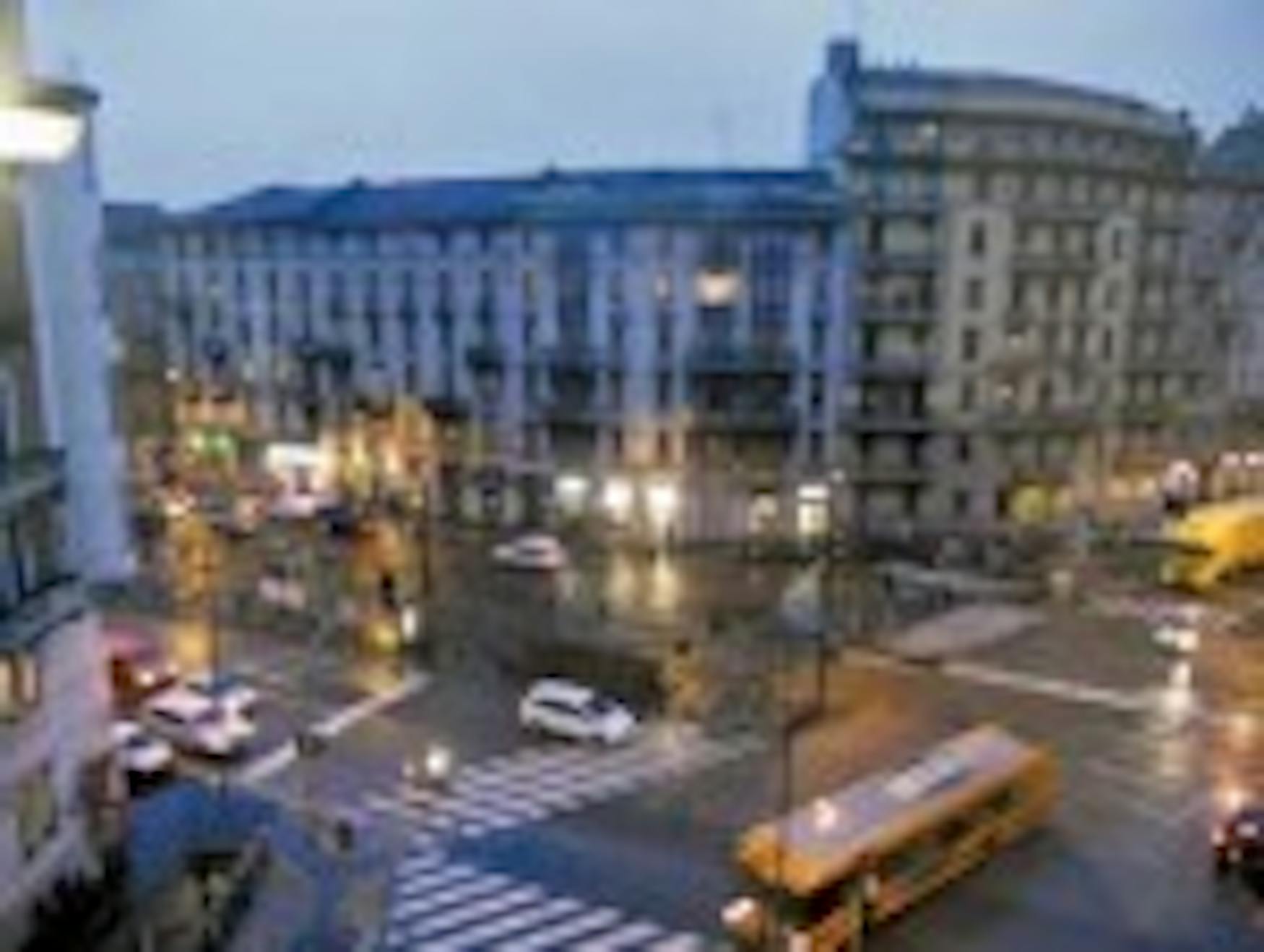WORLDVIEW: Milan 101
Milan maintains an Italian charm despite its American influence
This article is part of the Worldview series, which will feature articles from Brandeis students studying abroad in various countries around the world.If you are looking for picturesque Italian villas with ivy growing on the sides, sweeping balconies, old women making pasta sauce and sprawling European landscapes, then Milan is not the place for you.
Milan is an urban center with definite American traits, including an abundance of American stores, English speaking and urban landscapes. Yet it still maintains its "Italianness" with its passionate people, sham of a bureaucratic system, love of pasta, wine and fierce and unique fashions. It embodies a fusion of modern international Milan and old-world Italy.
While America has had its international influence on Milan, sparking a love of the Gap and American Apparel in the local Italians, and European capitals such as Paris and London have exerted their own modern influence, these cities have not affected Milan's most Italian trait-pasta.
Ah, pasta, the perfect pregame to every meal and event in Italy. That's right-we're doing it all wrong in America. Pasta is the appetizer after the appetizer in Italy and the precursor to every meal, not a stand-alone dish as it is served in the States.
Anything you can imagine comes with a side of pasta here. Sushi, Mexican, Chinese, even a pasta-based main course comes with a supplemental dish of more pasta, because everyone wants a side of carbs with their carbs.
And to compliment the copious amounts of pasta are the copious amounts of wine. Wine is the only product I have found to be sold by the five-gallon plastic container. It is also one of the few things that is fine for 12-year-olds to pick up for the family on their way home from school.
My love of pasta (which is now quickly fading) was one of the reasons why I chose Italy to study abroad.
Fashion is why I chose Milan specifically, and the city has yet to disappoint. The Milanese call their tacit fashion code la bella figura, or the beautiful appearance, and they really mean it.
Sweatpants in Milan are not an option, let alone a passing thought. My roommate wore her college sweatpants on the metro and was stared down by a 65-year-old woman wearing a fur coat and 4-inch heels who looked as though my roommate was wearing a Gaga-esque steak dress on her way to class.
I'm not even sure the Milanese know what true sweats are, because all their gym apparel comes from the same chic boutique, called Freddy, or from Abercrombie and Fitch. I've even seen people wearing bedazzled Armani unitards to the gym.
The Milanese don't look sloppy at any point during the day. Even the bambini (children) here are fierce, and the small dogs they drag everywhere sport designer labels.
The Italian zeal is also displayed in their love of soccer that is unparalleled in the States. I first encountered this at a game I attended where a fellow spectator chain smoked seven cigarettes, yelled a string of indeterminable Italian curses at the field complete with accompanying hand gestures, stripped his shirt off and used it to light a flare, drank a cup of what I'm presuming was wine and sat down again in time for the next play. This was all after goal one. There were five scored during that particular game, and he was not alone by any means.
With their passion invested in pasta and soccer, the Italian bureaucracy lacks the same chic demeanor as their attire.
Italian bureaucracy is a system built on disorganization, misery, strikes and lines. During my stay here, I've visited the police station three separate times for my student visa, and each experience has been worse than the one before it. The police officers play bingo and call out numbers in no discernible order, and if you're lucky they will randomly call your number within 3 hours of your arrival. I have never been lucky.
And the crown jewel in Italian bureaucracy is the art of striking. In Italy, scioperi (strikes) are actually built into the monthly schedule of city programming. And strikes are not just onetime occurrences. They happen every single month without fail and they never fail to make everyone miserable and late.
I have toured Europe and visited Florence and Venice. Though at first the slight American influence in Milan made me feel somewhat shortchanged in my study abroad experience, I now realize I wouldn't trade Milan for the world.
I would miss the city streets, the disorganized bureaucracy, the women wearing fur coats no matter what the weather is and the people screaming the Duck Sauce club song "Barbra Streisand" outside my window at 5 a.m. on their way back from the discoteccas.
Milan is the perfect city. Despite the fact that Milan has a heavier American influence than many other cities throughout Europe, it still remains uniquely Italian in its pasta, its inability for the Italians to form lines coherently or the complete joke that is Italian bureaucracy.
It has been the pasta, lack of governmental organization, metro stares and overly fashionable gym attire that has made my time here in Milan unique, especially with the abundance of cannoli.
And for better or worse, all these strange things have contributed to my Italian adventures.




Please note All comments are eligible for publication in The Justice.